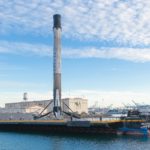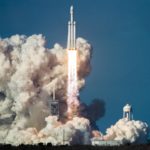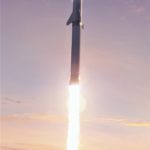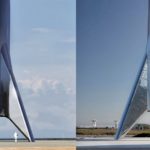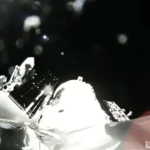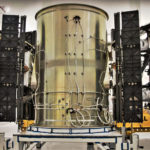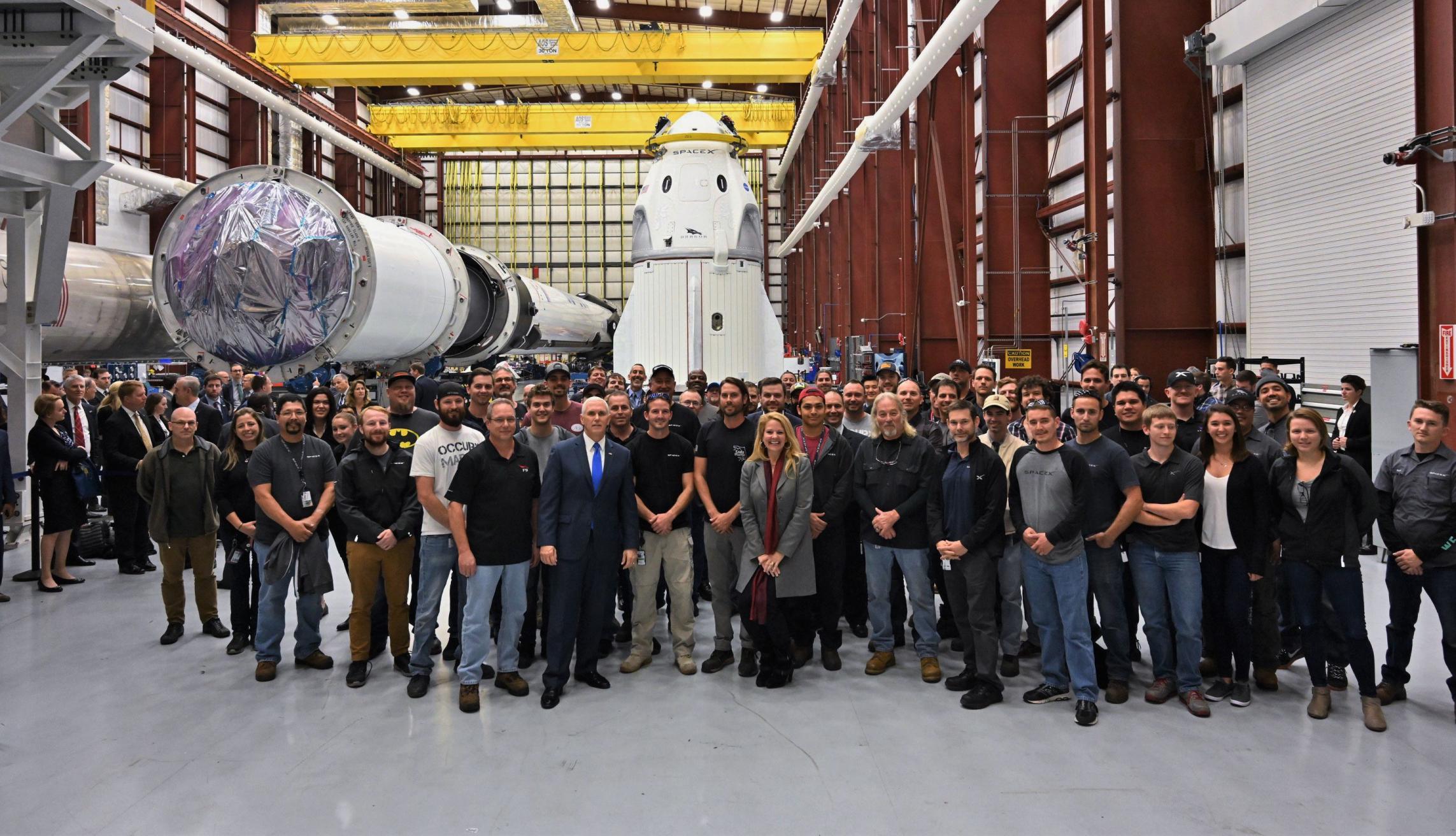
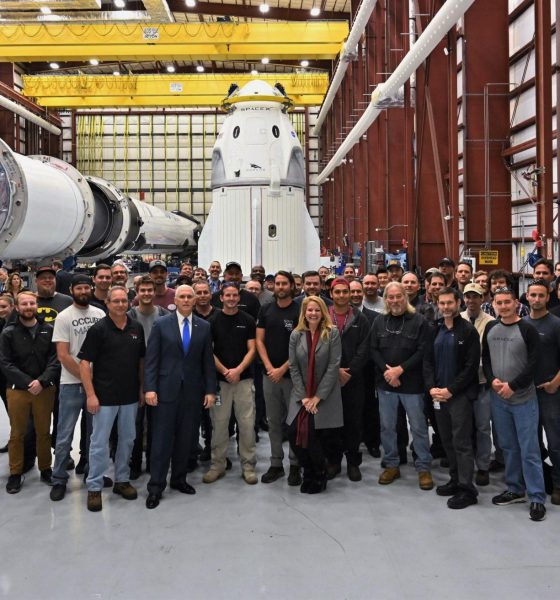
News
SpaceX lays off 10% of staff by email as Falcon Heavy, BFR, and Starlink ramp up
In an unusual move for a privately-held company that raised $500M-750M in the last six months alone and is the 2nd or 3rd most-valuable VC-backed entity in the United States (~$30B), SpaceX abruptly announced a decision to lay off ~10% of its workforce of 7,000+, effective immediately as of January 11th.
Although layoffs are often a necessary evil in particularly competitive industries or underperforming companies, SpaceX is not exactly a strong fit for either characteristic. The company also opted for a truly bizarre and impersonal layoff method so unfriendly that several employees described it feeling like a corporate “Hunger Games” or a “purge”.
https://twitter.com/seanbhart/status/1084139223760945152
Over the past six or so months, a number of reports – most recently confirmed by SEC filings showing ~$270M of $500M raised – noted that SpaceX was seeking considerable investment and capital influx in the form debt (a leveraged loan) and equity sales to the tune of $250M (loan) and $500M (equity) after some back and forth with investors and banks and additional fine-tuning. The terms of SpaceX’s 2018 fundraises are unknown but Bloomberg did acquire information suggesting that the company was only profitable or break-even with after a range of very specific and dubious accounting decisions. Put more bluntly, SpaceX did not demonstrate actionable profitability to investors during their 2018 pitches.
“[SpaceX showed] positive earnings before interest, taxes, depreciation, and amortization of around $270 million for the twelve months through September … But that’s because it included amounts that customers had prepaid and because it excluded costs related to non-core research and development. Without those adjustments, earnings for the period were negative.” – Bloomberg, 19 November 2018
However, the fact of the matter is that SpaceX’s profitability is and has long been nearly irrelevant as long as the company was still able to convince investors that it was wisely investing its funds in potentially revolutionary present and future projects like Falcon Heavy, reusable rockets, BFR, and Starlink. Essentially, if SpaceX could show that they could be profitable if they wanted to be, investors were willing to swallow unusual risks in return for prestige and a potentially vast payout down the road. The decision to lay off 10% of the company’s workforce immediately after raising anywhere from $500-750M could indicate that layoffs were either directly or indirectly related to the terms of its fundraising rounds.
When you're talking about 850 layoffs across the company, there's no way even the best company at hiring/firing decisions is going to avoid making tons of mistakes about who they kept and who they let go.
— Jonathan A. Goff (@rocketrepreneur) January 12, 2019
Notably, some basic back-of-the-napkin estimates would suggest that cutting 10% (say 700-800 employees) at an average salary (or equivalent hourly pay) of ~$90K/year* with an average overhead of 30% would reduce SpaceX’s operational costs by $80-100M annually, potentially enough to sway the above financial account enough to show a small annual profit or at least allow the company to break even. Put frankly, $80-100M per year is not nearly enough to plausibly fund SpaceX’s BFR and Starlink development programs at anything close to the ambitious schedules CEO Elon Musk has laid out for the company, including orbital BFR launches as early as 2020 and getting Starlink to initial operational status around the same time (2020-2021).
- Falcon 9 Block 5 booster B1049. (Pauline Acalin)
- Falcon Heavy clears the tower. (Photo: Tom Cross/Teslarati)
- BFR (2018) breaks through a cloud layer shortly after launch. (SpaceX)
- SpaceX’s Starhopper seen in a January render and a January photo. (SpaceX/Elon Musk)
- One of the first two prototype Starlink satellites separates from Falcon 9’s upper stage, February 2018. (SpaceX)
- SpaceX’s first two Starlink prototype satellites are pictured here before their inaugural launch, showing off a thoroughly utilitarian bus and several advanced components. (SpaceX)
However, saving ~$100M annually might be enough to sway investors that are less prestige-hungry and more conservative to bet on a successful but still relatively high-risk launch company. To be even more generous, one could assume that ~800 employees were strategically cut to remove entire internal groups or departments no longer needed, perhaps doubling or tripling the annual savings to $200M-$300M, still not even close to enough money to fund more than 10-20% of expected BFR and Starlink capex.
In September 2018, CEO Elon Musk estimated the new rocket would cost ~$5B to develop (no less than $2B, no more than $10B) on its own, entirely excluding the $10B COO/President Gwynne Shotwell estimated SpaceX’s Starlink satellite internet constellation would cost to complete in April 2018. Working on profits of less than $300M a year, it would take SpaceX decades of stable earnings to foot that collective $12B-20B bill.
“To continue delivering for our customers and to succeed in developing interplanetary spacecraft and a global space-based Internet, SpaceX must become a leaner company. Either of these developments, even when attempted separately, have bankrupted other organizations. This means we must part ways with some talented and hardworking members of our team. We are grateful for everything they have accomplished and their commitment to SpaceX’s mission. This action is taken only due to the extraordinarily difficult challenges ahead and would not otherwise be necessary.” – SpaceX, January 11
* (Source: Payscale)

A new level of “counterintuitive”
Regardless of whether SpaceX had sincere and angelic motivations for these layoffs (it’s nearly impossible to know), the single most unpleasant aspect of the whole ordeal is how the company managed it and communicated with employees. According to comments and hints from a dozen or more employees, the process began with next to no official warning around lunchtime on Friday, January 11th. Employees attended an all-hands meeting where they were told in frank terms that a major portion of the company – those deemed to be lower performers – would be laid off within 24 hours. All 7000+ employees were told around the same time.
The catch: nobody was told who exactly would be cut – instead, SpaceX would force every single employee to leave work early on Friday and spend 12-24 hours in total uncertainty until an unspecified time on Saturday, when they were – in theory – supposed to receive an email telling them whether or not they still had a job waiting for them on Monday. In many cases, workers were forced to call a number provided by SpaceX and ask the company themselves if they still had jobs, not even receiving the absolute minimum courtesy of some sort of call or notification. Whether the given employee was five months or five years senior, the process was identical – ~24 hours of avoidable existential uncertainty followed by an automated email or phone call that you had to make yourself.
Nobody was offered a clear explanation as to why they were chosen out of all SpaceX employees. Workers who had given their heart, soul, blood, sweat, and tears to SpaceX for more than half a decade were – very literally – fired over email without the simplest explanation and told to not return to work unless returning company property, effective immediately. Thanks to California’s WARN Act protections, all laid off employees in California will thankfully be paid for two additional months (until March 11, 2019) to support job searching and re-training.
- A bittersweet sunrise as Falcon 9 B1049 arrives in port. (Pauline Acalin)
- Workers process Falcon 9 B1048 after recovery. (Pauline Acalin)
- Workers process Falcon 9 B1046 after the booster’s third flawless launch and landing in seven months. (Pauline Acalin)
- SpaceX recovery technicians work on Falcon 9 with similar cherry-picker lifts, offering a sense of scale of the new Starship water tower. (Pauline Acalin)
It’s impossible to know who exactly within SpaceX thought this method of layoffs was preferable to something at least a modicum more humane. It’s equally unclear why these layoffs are happening now, and SpaceX’s official statement appears to be an unsatisfactory half-answer at best. To the 90% that remain, one can only wish them the best and hope that those 10% cut from the company were not all as essential as some of them seem to have been. In the meantime, it appears that SpaceX will continue to push ahead in attempts to improve Falcon 9 reusability, field the next Falcon Heavy, build out and launch Starlink, and develop BFR.
Some of those at SpaceX responsible for enabling the company’s many, many extraordinary achievements hopefully still remain and will be able to ensure that the company keeps heading down the right paths in spite of major speedbumps like this. If you or anyone you know knows someone who works at SpaceX or have been inspired by the company’s mission and many successes in spite of the odds, make sure to be cognizant and appreciative of the tens or hundreds of thousands of rewarded (and unrewarded) hours of hard work that go into every single major and minor SpaceX achievement. To any employees reading, thank you for your dedication and keep fighting the hard fight.
Happy Labor Day! We feel so lucky to work with such an awesome team @SpaceX. pic.twitter.com/aXQXN3fGlA
— SpaceX (@SpaceX) September 3, 2013

News
Tesla FSD fleet is nearing 7 billion total miles, including 2.5 billion city miles
As can be seen on Tesla’s official FSD webpage, vehicles equipped with the system have now navigated over 6.99 billion miles.

Tesla’s Full Self-Driving (Supervised) fleet is closing in on almost 7 billion total miles driven, as per data posted by the company on its official FSD webpage.
These figures hint at the massive scale of data fueling Tesla’s rapid FSD improvements, which have been quite notable as of late.
FSD mileage milestones
As can be seen on Tesla’s official FSD webpage, vehicles equipped with the system have now navigated over 6.99 billion miles. Tesla owner and avid FSD tester Whole Mars Catalog also shared a screenshot indicating that from the nearly 7 billion miles traveled by the FSD fleet, more than 2.5 billion miles were driven inside cities.
City miles are particularly valuable for complex urban scenarios like unprotected turns, pedestrian interactions, and traffic lights. This is also the difference-maker for FSD, as only complex solutions, such as Waymo’s self-driving taxis, operate similarly on inner-city streets. And even then, incidents such as the San Francisco blackouts have proven challenging for sensor-rich vehicles like Waymos.
Tesla’s data edge
Tesla has a number of advantages in the autonomous vehicle sector, one of which is the size of its fleet and the number of vehicles training FSD on real-world roads. Tesla’s nearly 7 billion FSD miles then allow the company to roll out updates that make its vehicles behave like they are being driven by experienced drivers, even if they are operating on their own.
So notable are Tesla’s improvements to FSD that NVIDIA Director of Robotics Jim Fan, after experiencing FSD v14, noted that the system is the first AI that passes what he described as a “Physical Turing Test.”
“Despite knowing exactly how robot learning works, I still find it magical watching the steering wheel turn by itself. First it feels surreal, next it becomes routine. Then, like the smartphone, taking it away actively hurts. This is how humanity gets rewired and glued to god-like technologies,” Fan wrote in a post on X.
News
Tesla starts showing how FSD will change lives in Europe
Local officials tested the system on narrow country roads and were impressed by FSD’s smooth, human-like driving, with some calling the service a game-changer for everyday life in areas that are far from urban centers.

Tesla has launched Europe’s first public shuttle service using Full Self-Driving (Supervised) in the rural Eifelkreis Bitburg-Prüm region of Germany, demonstrating how the technology can restore independence and mobility for people who struggle with limited transport options.
Local officials tested the system on narrow country roads and were impressed by FSD’s smooth, human-like driving, with some calling the service a game-changer for everyday life in areas that are far from urban centers.
Officials see real impact on rural residents
Arzfeld Mayor Johannes Kuhl and District Administrator Andreas Kruppert personally tested the Tesla shuttle service. This allowed them to see just how well FSD navigated winding lanes and rural roads confidently. Kruppert said, “Autonomous driving sounds like science fiction to many, but we simply see here that it works totally well in rural regions too.” Kuhl, for his part, also noted that FSD “feels like a very experienced driver.”
The pilot complements the area’s “Citizen Bus” program, which provides on-demand rides for elderly residents who can no longer drive themselves. Tesla Europe shared a video of a demonstration of the service, highlighting how FSD gives people their freedom back, even in places where public transport is not as prevalent.
What the Ministry for Economic Affairs and Transport says
Rhineland-Palatinate’s Minister Daniela Schmitt supported the project, praising the collaboration that made this “first of its kind in Europe” possible. As per the ministry, the rural rollout for the service shows FSD’s potential beyond major cities, and it delivers tangible benefits like grocery runs, doctor visits, and social connections for isolated residents.
“Reliable and flexible mobility is especially vital in rural areas. With the launch of a shuttle service using self-driving vehicles (FSD supervised) by Tesla in the Eifelkreis Bitburg-Prüm, an innovative pilot project is now getting underway that complements local community bus services. It is the first project of its kind in Europe.
“The result is a real gain for rural mobility: greater accessibility, more flexibility and tangible benefits for everyday life. A strong signal for innovation, cooperation and future-oriented mobility beyond urban centers,” the ministry wrote in a LinkedIn post.
News
Tesla China quietly posts Robotaxi-related job listing
Tesla China is currently seeking a Low Voltage Electrical Engineer to work on circuit board design for the company’s autonomous vehicles.

Tesla has posted a new job listing in Shanghai explicitly tied to its Robotaxi program, fueling speculation that the company is preparing to launch its dedicated autonomous ride-hailing service in China.
As noted in the listing, Tesla China is currently seeking a Low Voltage Electrical Engineer to work on circuit board design for the company’s autonomous vehicles.
Robotaxi-specific role
The listing, which was shared on social media platform X by industry watcher @tslaming, suggested that Tesla China is looking to fill the role urgently. The job listing itself specifically mentions that the person hired for the role will be working on the Low Voltage Hardware team, which would design the circuit boards that would serve as the nervous system of the Robotaxi.
Key tasks for the role, as indicated in the job listing, include collaboration with PCB layout, firmware, mechanical, program management, and validation teams, among other responsibilities. The role is based in Shanghai.
China Robotaxi launch
China represents a massive potential market for robotaxis, with its dense urban centers and supportive policies in select cities. Tesla has limited permission to roll out FSD in the country, though despite this, its vehicles have been hailed as among the best in the market when it comes to autonomous features. So far, at least, it appears that China supports Tesla’s FSD and Robotaxi rollout.
This was hinted at in November, when Tesla brought the Cybercab to the 8th China International Import Expo (CIIE) in Shanghai, marking the first time that the autonomous two-seater was brought to the Asia-Pacific region. The vehicle, despite not having a release date in China, received a significant amount of interest among the event’s attendees.
